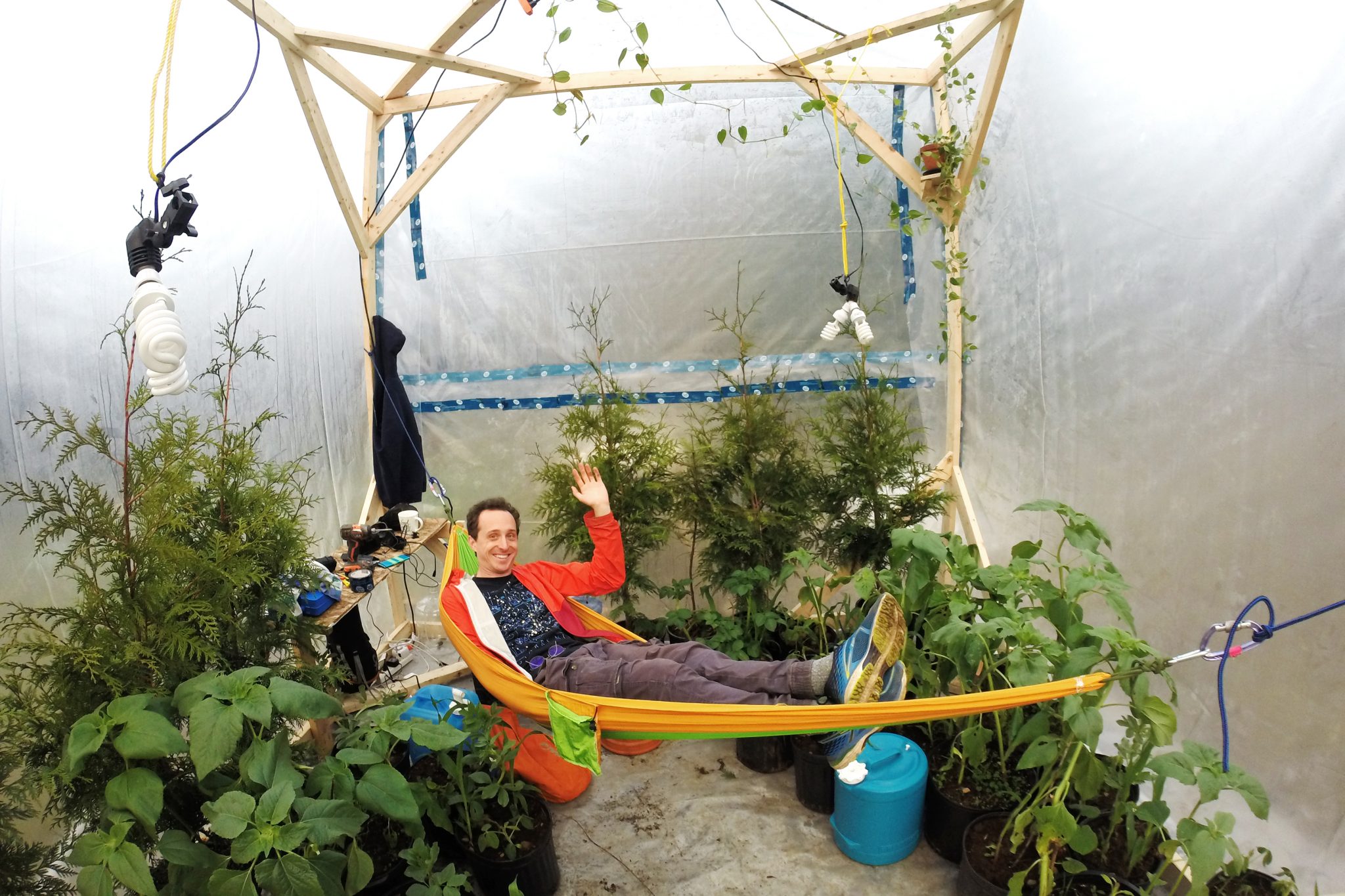Laurier grad seals himself inside an “earth jar” to research and discuss climate change


On Tuesday, Oct. 23, British Columbia resident, Laurier and Guelph graduate and self-proclaimed “whimsical scientist” Kurtis Baute declared that he would secure himself inside of a self-made “earth jar”, an isolated and self-sustaining ecological environment of his own creation, to explore his research on climate change.
The earth jar was roughly 1,000 cubic feet in size, 10 feet long by 10 feet wide by 10 feet high and was intended to be a scale replica of earth’s atmosphere. The experiment was intended to last three days and his own experiment predicted 21 hours.
However, due to the build-up of carbon dioxide levels, he was forced to abandon the project after only 14 hours. It’s that fundamental significance of carbon dioxide, with regard to air levels, that he wants people to address.
“I think that people don’t understand the basic science around the air that we breathe. They don’t understand that, yeah, carbon dioxide makes up less than one per cent of the air, but it’s an extremely important quantity and an extremely important gas. In my jar, levels only went up to one per cent carbon dioxide, but that was still extremely dangerous for me,” Baute said.
“I think that — obviously — as we raise the carbon dioxide levels globally, it has all sorts of implications for our environment.”
Baute got the idea for the earth jar based on a terrarium that he has been keeping at his desk for the past two years, monitoring and watching the life and death cycle of the plants that have existed inside of it.
“People have been doing terrarium experiments for hundreds of years, but not often with people in them,” Baute said. “Through that time I [was] thinking: ‘what would it look like if a human did that? What sorts of lessons could you teach people from that experiment’?”
If you want to be an ally, you have to stop using your proximity to a friend’s lived experience as a scapegoat when you are being called in or called out. You have to be accountable.
“There [was] a great opportunity to teach about climate change and how carbon dioxide is affecting our earth. So I decided to go for it,” he said
According to his Twitter page, the World Health Organization predicts that climate change will cause five million deaths by the year 2050.
Part of the earth jar experiment was to spread the word about a number of concerns that he feels should be at the forefront of people’s thoughts.
On a more personal level, Baute noted that this project has really helped him to see air for what it is, as well as the fundamental role that it serves.
“I no longer just look right through it: I see it as this fluid we are immersed in and it’s helping keep us alive. The more people that can see it that way, the better off we’ll be,” Baute said.
As climate change becomes a more serious, divisive and political issue, experiments like those of Baute underline the necessity of continuing the ongoing conversation regarding the significant impact that humans have on our sensitive and delicate ecosystem.
There are, however, a number of things that he feels could be done to work on that.
“One is that we need to eat less meat. Meat is a super inefficient way to get our calories,” Baute said.
“It takes at least three times the amount of grain — probably around three kilograms of grain per kilogram of beef. It’s got a huge impact on our environment.”
“Second thing is we need to drive less, so whether we’re changing how we commute — biking or walking or if we just work from home more.”
“The third thing is that we need to start a conversation which includes social change, using our votes to implement change, trying to change the ways we make policy,” he said.


